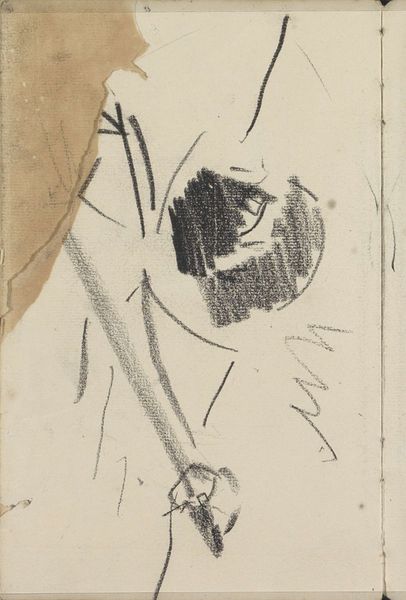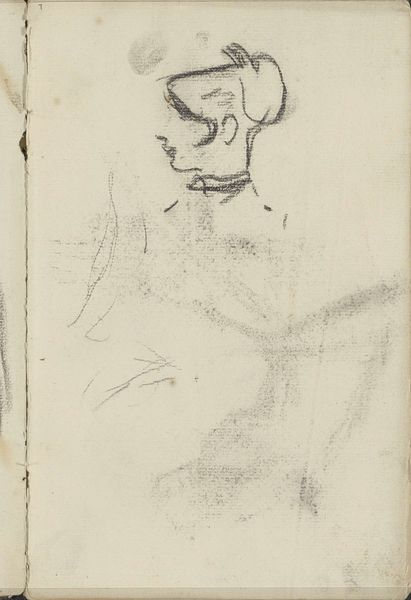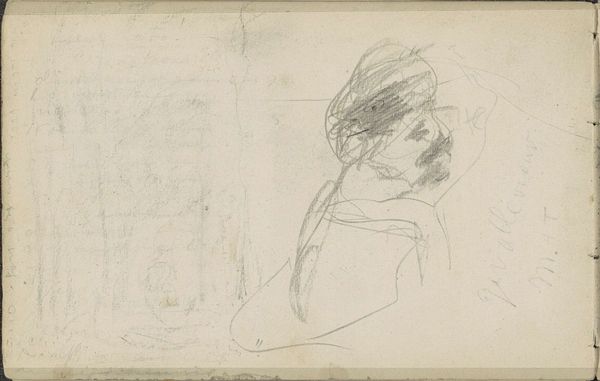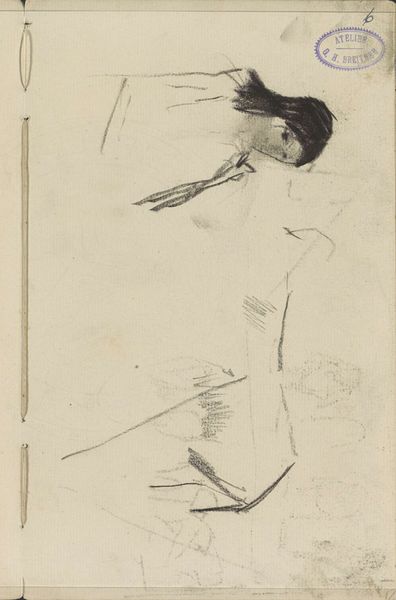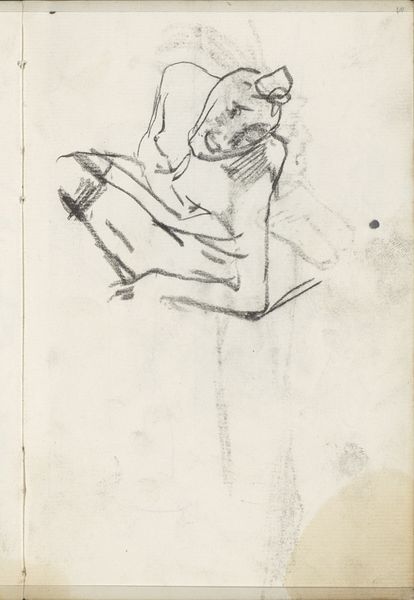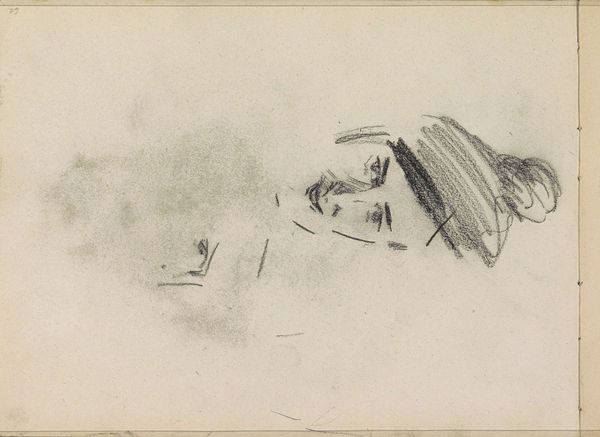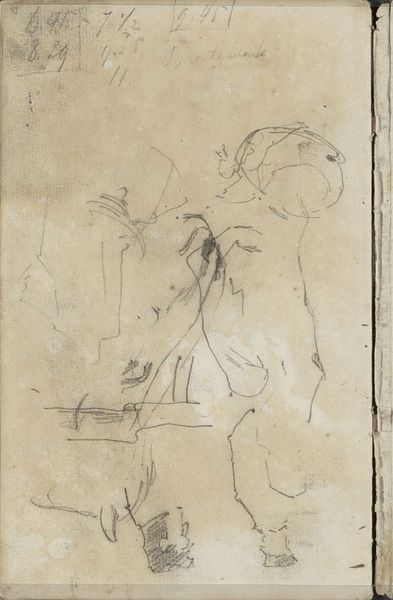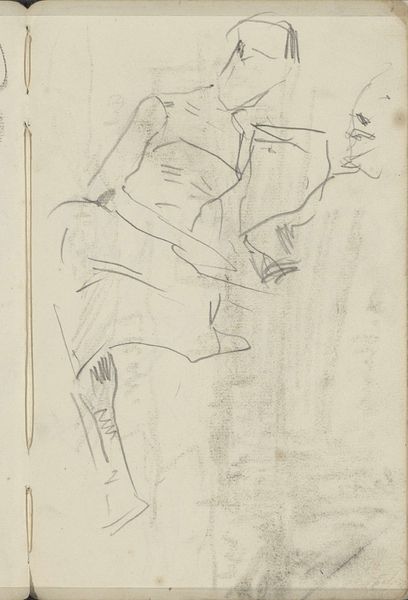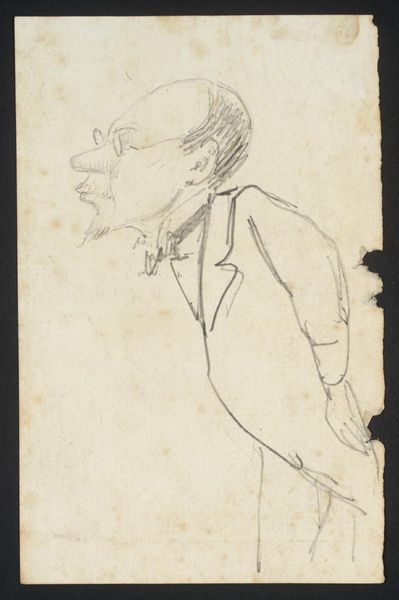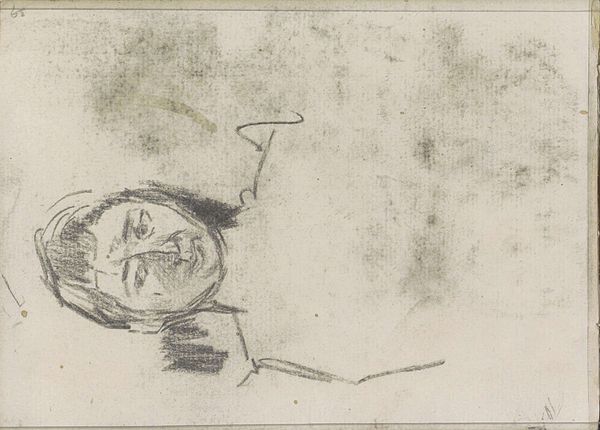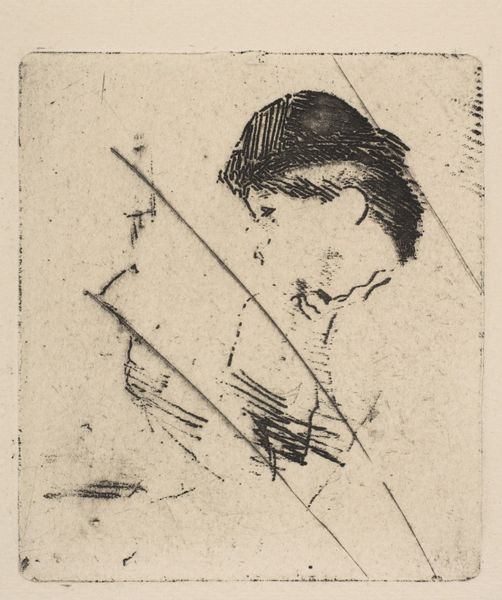
drawing, pencil
#
portrait
#
drawing
#
impressionism
#
pencil sketch
#
figuration
#
pencil
#
sketchbook drawing
#
profile
Dimensions: height 188 mm, width 117 mm
Copyright: Rijks Museum: Open Domain
Curator: I'm immediately drawn to the fleeting, almost ephemeral quality of this sketch. It feels like a whispered secret. Editor: And yet, those stark, almost brutal charcoal lines create a portrait out of mere suggestions. We're looking at George Hendrik Breitner’s "Vrouw met hoed, naar rechts," a drawing he completed around 1884. The work consists entirely of pencil on paper. Curator: Yes, precisely. It's more about feeling than seeing, don't you think? Like catching a glimpse of a stranger in a café. A half-formed memory floating on the page. The rapid, almost frantic strokes really add to this sense of movement. Editor: But the speed is calculated, a studied realism emerging from the immediacy of a sketch. Think of the socio-economic forces at play in Breitner’s Amsterdam. Urban life exploding; how did these developments in society and culture shape artistic techniques, like the fleeting, rough style apparent in the piece? Curator: It really highlights how the Impressionists weren’t just painting pretty pictures. Breitner wasn't idealizing his subject; there’s no sentimentality here. It's the unvarnished truth of a fleeting moment. There’s something inherently modern about its lack of adornment. Editor: These 'warts and all' depictions also represent a shift in artistic patronage. Who would consume such works? Were they part of an expanding, art-buying, middle class that perhaps didn't subscribe to academic and societal standards? Curator: I feel like the hat almost becomes the subject, casting a shadow on her face, obscuring her identity. Who is she? What is she thinking? Editor: More questions than answers, really. I appreciate the roughness of the pencil on the paper – it invites a sense of immediacy that’s missing from more finished, refined portraits. It exposes the labor, if you will. Curator: Indeed, and that ambiguity invites us in, encourages us to fill in the blanks. In a way, the portrait is completed within the mind's eye of the beholder, I guess. Editor: So, the drawing, then, acts less as a concrete depiction and more as a mirror reflecting our own assumptions and projections. Food for thought.
Comments
No comments
Be the first to comment and join the conversation on the ultimate creative platform.
